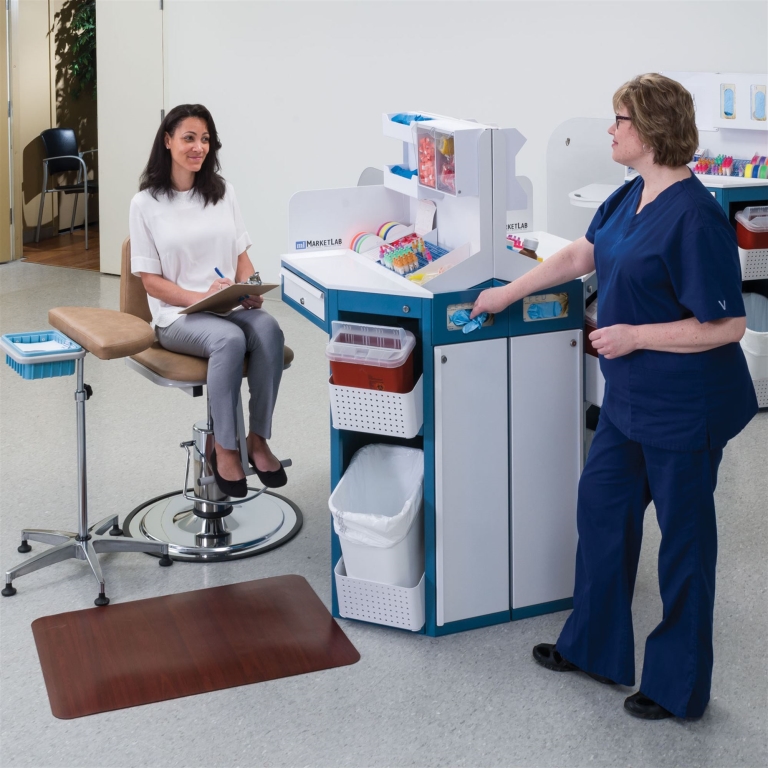
What Does a Phlebotomist do? Insights Into the Role & Responsibilities of a Medical Blood Specialist
Introduction
If you’ve ever undergone a blood test,chances are a phlebotomist was involved in collecting your blood sample. But what exactly does a phlebotomist do? This essential healthcare professional plays a crucial role in diagnostics, treatment, and overall patient care.In this comprehensive guide, we’ll explore the responsibilities, skills, and significance of phlebotomists in the medical field.
What Is a Phlebotomist?
A phlebotomist is a trained medical professional specializing in drawing blood from patients for laboratory testing, donations, or research. Their expertise ensures that blood samples are collected safely, accurately, and with minimal discomfort for patients.
this role is vital within hospitals, clinics, blood banks, and diagnostic laboratories, supporting healthcare providers in diagnosing illnesses, monitoring health conditions, and ensuring blood supply safety.
Key Responsibilities of a Phlebotomist
Understanding what a phlebotomist does involves recognizing their core responsibilities in healthcare environments. These duties encompass a broad range of patient care and technical tasks:
- Blood Sample Collection: Using various techniques to draw blood safely and efficiently.
- Labeling and handling Samples: Ensuring samples are correctly labeled, stored, and transported to labs.
- Patient Preparation and Comfort: Explaining procedures, calming nervous patients, and providing reassurance.
- Maintaining Equipment: Preparing and sterilizing needles, tubes, and othre phlebotomy tools.
- Record Keeping: Documenting patient facts and blood collection details accurately.
- Adhering to Safety Protocols: Following proper infection control practices and OSHA regulations.
By performing these responsibilities diligently, a medical blood specialist ensures the quality and safety of blood samples, which is crucial for accurate diagnosis and treatment.
Skills and Qualifications Needed to Become a Phlebotomist
Prosperous phlebotomists possess a unique blend of technical skills and interpersonal qualities, including:
- Technical proficiency in venipuncture and capillary blood draws
- Attention to detail for accurate labeling and documentation
- Strong communication skills to interact empathetically with patients
- Knowledge of safety and infection control standards
- Certification from recognized bodies (e.g.,ASCP,NHA)
Typically,aspiring phlebotomists need a high school diploma or equivalent,along with specialized training and certification programs.
| Qualification | Requirement |
|---|---|
| Education | High school diploma or GED |
| Training | phlebotomy certification program |
| Certification | certified Phlebotomy Technician (CPT) |
| Experience | On-the-job training or internships |
A Day in the Life of a Phlebotomist
Curious about what a typical day looks like for a medical blood specialist? Here’s an overview of their daily routine:
- preparing the workspace: Ensuring all equipment and supplies are sterile and ready.
- Patient interactions: Greeting patients, explaining procedures, and answering questions.
- Blood collection: Performing venipuncture or capillary pricks, often in a busy clinic or hospital setting.
- sample processing: Labeling, documenting, and transporting samples securely to laboratories.
- Record management: Maintaining accurate logs and patient information.
- Cleaning and sterilizing equipment: Ensuring safety and compliance with health regulations.
The role requires both technical skill and a compassionate approach to patient care, making it one of the most rewarding healthcare professions.
Benefits of a Career as a Phlebotomist & Practical Tips
Benefits
- Growing demand: Increasing needs in hospitals, clinics, and blood banks.
- Relatively speedy training: Certification courses can often be completed within months.
- Job stability: Consistent work opportunities in healthcare settings.
- Personal fulfillment: Direct patient interaction and essential contribution to healthcare outcomes.
Practical Tips for Aspiring Phlebotomists
- Invest in certified training programs to gain credibility and skills.
- Practice venipuncture techniques regularly to build confidence.
- Develop excellent communication skills to ease patient anxiety.
- Stay updated on OSHA and safety protocols.
- Seek internships or volunteering opportunities to gain hands-on experience.
Real-Life Case studies of Phlebotomists
**Case Study 1:** A pediatric phlebotomist successfully performs blood draws on young children who are typically arduous to draw blood from, showcasing patience and technical skills. This highlights the importance of gentle handling and calming communication.
**Case Study 2:** During a blood bank shortage, a team of phlebotomists works overtime to collect and process donations, demonstrating their critical role during emergencies and community health drives.
these real-life examples underline how versatile and vital the role of a medical blood specialist can be.
First-Hand Experience: Why Becoming a phlebotomist Matters
Many phlebotomists find their work deeply rewarding, knowing that their efforts directly impact patient health and diagnosis. Whether calming a nervous patient or contributing to life-saving transfusions, their role is both meaningful and essential.
For those interested in healthcare careers, becoming a phlebotomist offers a practical and accessible entry point into the medical field with opportunities for growth and specialization.
Conclusion
The role of a phlebotomist is central to the healthcare ecosystem, bridging patient care and laboratory diagnostics. Their responsibilities extend beyond just drawing blood-they ensure safety,accuracy,and compassionate care. As the demand for diagnostic testing and blood donations continues to rise, so does the importance of skilled medical blood specialists.
If you are seeking a healthcare career that combines technical skills with meaningful patient interaction, becoming a phlebotomist could be the right choice. Equipped with proper training and a compassionate attitude, you can make a significant difference in patients’ lives and contribute to the health and well-being of your community.